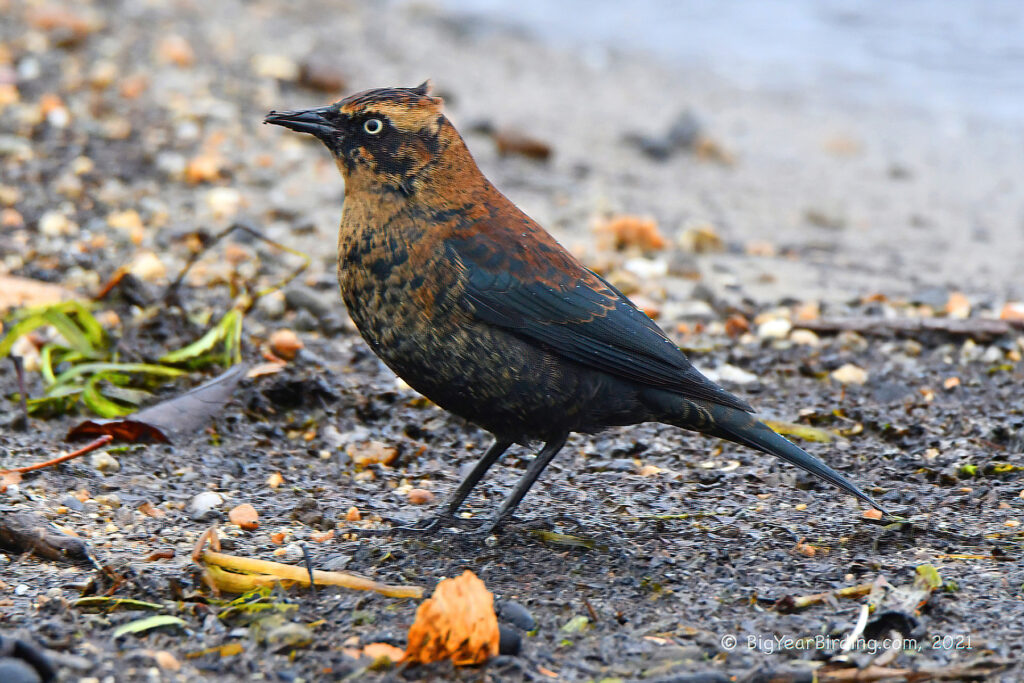
The Rusty Blackbird (Euphagus carolinus) is a medium-sized migratory bird that belongs to the icterid family. These birds measure around 8.3 to 9.4 inches in length and have a wingspan of approximately 13.4 to 14.6 inches. The males are slightly larger and heavier than the females, weighing between 2.3 to 2.9 ounces, while the females weigh between 1.8 to 2.5 ounces.

One of the most distinctive field marks of the Rusty Blackbird is its rusty-colored plumage, which appears as speckles and streaks on its black feathers. The male Rusty Blackbird has a glossy black head and body with rusty-brown feathers on its back and wings, while the female is less glossy with a darker brown head and rusty-brown feathers on its back and wings. They have a sharp pointed bill, yellow eyes, and black legs.
The Rusty Blackbird is a migratory bird that breeds in the boreal forests of North America, from Alaska to Newfoundland, and winters in the southeastern United States, Central America, and northern South America. During migration, they may be seen in wetland habitats such as marshes, swamps, and flooded fields. They usually migrate in flocks and are often seen with other blackbird species.
The Rusty Blackbird population has been declining rapidly in recent years, with an estimated 85% reduction in the population since the 1960s. This decline is thought to be due to habitat loss, degradation, and fragmentation in their breeding and wintering grounds. The Rusty Blackbird is now considered a species of conservation concern and is listed as a Species of Greatest Conservation Need in many states.

Conservation efforts to protect the Rusty Blackbird include preserving and restoring wetland habitats, reducing contaminants and pollutants, and promoting public awareness of the bird’s plight. Citizen science initiatives, such as the Rusty Blackbird Spring Migration Blitz, encourage birdwatchers to document sightings of the bird during migration and help researchers understand the species’ distribution and migration patterns better.

